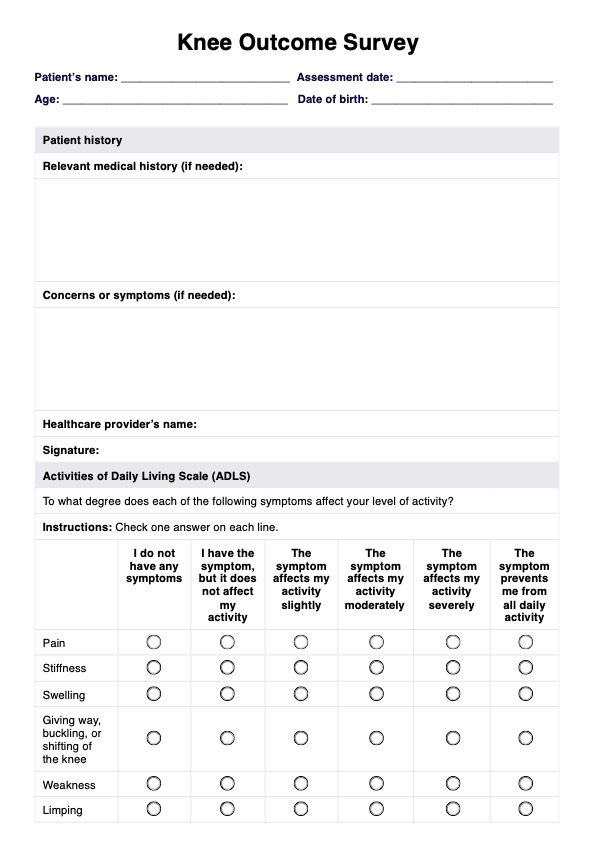The highest possible score on the Knee outcome survey is 70.

Knee Outcome Survey
Assess the functional limitations of your patient's knee with a Knee Outcome Survey.
Use Template
Knee Outcome Survey Template
Commonly asked questions
The Knee Injury and Osteoarthritis Outcome Score (KOOS) and Lysholm Knee Scoring Scale are other reliable and responsive tools used to assess the impact and functional limitations of the knee.
The most common knee problem is a sprained or strained ligament.
EHR and practice management software
Get started for free
*No credit card required
Free
$0/usd
Unlimited clients
Telehealth
1GB of storage
Client portal text
Automated billing and online payments











